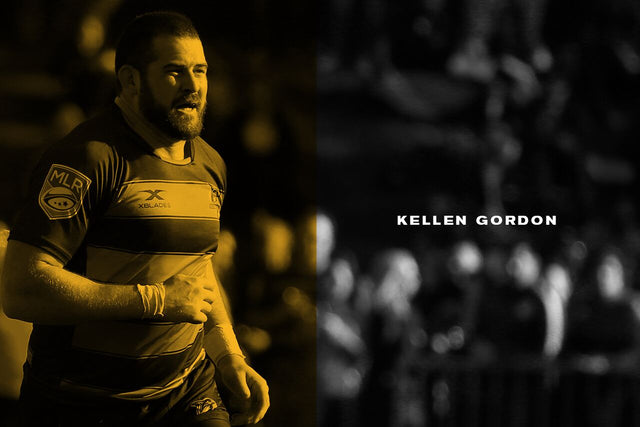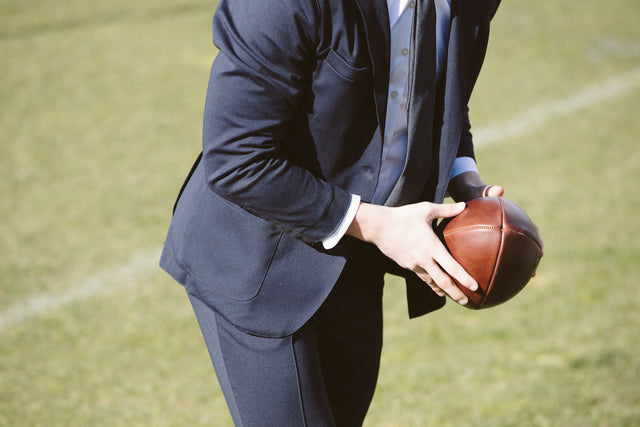Kellen Gordon: Multifaceted, Multitalented, and headed for Seawolves success
Written By: Mark Janzen
Kellen Gordon brought the sold-out crowd at Starfire Stadium to its feet, rumbling up the middle of the park with a first-half run that featured speed rarely seen from a prop, and physicality rarely seen by anyone beyond the front row.
In a single moment in Seattle’s first-ever Major League Rugby match, the Seattle Seawolves loosehead prop, who hails from Kenmore, Washington and who played his college rugby at Central Washington University, Gordon showed up exactly as advertised on much of the team’s marketing paraphernalia – front and center. The prop-turned centre-turned sevens star-turned prop provided the calibre of play that fans will keep coming back to see.
“I think Kellen can best be described as a wing stuck in a prop’s body,” says Seawolves player-coach Phil Mack. “His catch and pass skills are great. He runs really sharp lines, but he also provides a physical element up front.”
In Seattle’s season-opening win against San Diego, Gordon, 29, played an instrumental role in what was a dominant performance from the Seawolves pack. For his efforts, he was named to Major League Rugby’s First XV of the Week. Along with Seawolves hooker Ray Barkwill, who was named the man of the match, and tighthead prop Tim Metcher, who was also amongst the MLR’s First XV, the Seattle trio helped the pack live up to its self-described nickname – The Seawall.
“We want to make sure we’re an uncrackable wall,” the 6-foot, 250-pound Gordon said following Sunday’s match. “We can bend and we can let them push a bit, but they’re going to drown eventually. That’s the whole point of our defence. We’re going to make sure they don’t get through.”
With a small smile emerging from the bearded Gordon, he added: “It’s fun to know we can bully teams.”
Yeah, here’s thinking Gordon is going to be a fan favourite.

After graduating from Inglemoor High School in Kenmore in 2006, Gordon headed southeast, travelling the I90 to Ellensburg, Washington where he spent five years playing rugby with CWU.
At 280 pounds, Gordon looked like a stereotypical prop, so that’s where he fit in the Wildcats lineup for the first four years of his university career. However, by the time his fifth year rolled around, Gordon had dropped the better part of 60 pounds and was down to about 215 pounds, prompting a shift from the front row to the backs. Then, in the summer leading up to his final year at CWU, a three-month stint in New Zealand with Canterbury’s International High Performance Unit positioned him well for a transition to playing centre.
Following his graduation from CWU in 2011, he moved to Seattle, joining Old Puget Sound Beach – a club that, in a roundabout way, eventually became the Seattle Saracens. There, he settled in as a flanker for the better part of the next five years, while also taking a run at the sevens game. With his dynamic skill set, combined with his imposing physicality, Gordon helped the Saracens win three USA Rugby Club National 7’s championships in 2013, 2014 and 2015.
But despite all his success as a sevens player and solidifying himself as a more than serviceable flanker, that front row kept calling his name.
Yeah, that grin – you know, the one that sneaks out when his pack is throwing the opposition around the park and forcing penalty tries (Seattle earned three against San Diego) – wanted to get back in the mix with the biggest of the boys.
“There’s something about being in the front row and when you push over another team, it’s invigorating.”
There’s that smile again.
Returning to the front row this past year with the Saracens – a stint that included playing in an early-January exhibition game against the MLR-playing Houston SabreCats – Gordon was back home.
“I still retained a lot of my skills-set as a flanker and I like to think I’m still pretty quick,” Gordon says. “I feel like I’m basically like another flanker on the field but I’m also good in the scrum.”
On top of all that, there’s also his tackling ability – a talent Gordon knows better than anything else.

When Gordon walked to work on a mild-weathered mid-March day, he was wearing Seawolves apparel. An excited passerby, who seemed keen to become a Seawolves supporter, stopped him. Gordon engaged the fan. Quite obviously, rugby was the topic on the table.
Yet, when Gordon carried on and walked into his office space at Atavus, he started talking football.
Atavus is a company that started as a rugby-centric brand focused on helping “maximize athlete performance” through unique coaching philosophies and sports analytics. In recent years, the company has expanded to work within the ever-popular football sphere, helping teach rugby-style tackling techniques. The Seawolves prop is on the football side, charged with leading the national programming for high schools. In short, Gordon is helping football coaches teach their players how to tackle like rugby players – a technique Seattle Seahawks coach Pete Carroll gleaned and instilled within his own team.
“Atavus helped us a ton in our efforts to improve our tackling and make our style of play better and tougher,” Carroll says in a testimonial on the Atavus website. “We are tackling better than ever because of the things we’ve learned.”
For Gordon, playing rugby while working within the football world is a unique, yet easily balanced coexistence.
“We realized that tackling is tackling,” says Gordon, who actually missed Seattle’s second game of the year because he was in Minnesota speaking at a tackling clinic for coaches. “It doesn’t matter if it’s in rugby or football. We’re trying to do shoulder-led tackling and take the head out of the game. Then, it’s basically about creating confidence in your players. That’s one of our biggest things – teaching coaches how to create confidence.
“We don’t believe you’re either a good or bad tackler. You can create good tacklers by good teaching. You can coach someone to be better. We’re trying to create a coaching system to make players more confident and to be safe.”
It’s almost something Gordon might know a thing or two about.

Returning to his prop-playing roots, Gordon’s tackling talent and abundant know-how – you don’t work at Atavus for six years without understanding perfect technique and exactly how to break it down – have come together to create a unique package. Spurning the “large and lumbering” characteristics of traditional American props, Gordon is hoping to make a statement both within the MLR and within USA Rugby circles.
With the skills of a back and the size of a forward, Gordon, who has trained with the sevens team but has yet to represent USA Rugby, is aiming to write unique chapters for both the Seawolves, and in his book of hopes and dreams, the Eagles fifteens side.
“Kellen definitely has all the skills, and it’s refreshing to have a guy like that in your squad,” Mack says.

On a sunny afternoon in Tukwila, Washington, USA 15s head coach Gary Gold was in attendance at the Seawolves home-opener.
With family, friends, and fans in the stands, Gordon wasn’t playing just to impress Gold. But there’s no doubt Gordon’s professional debut caught an Eagles’ eye.


